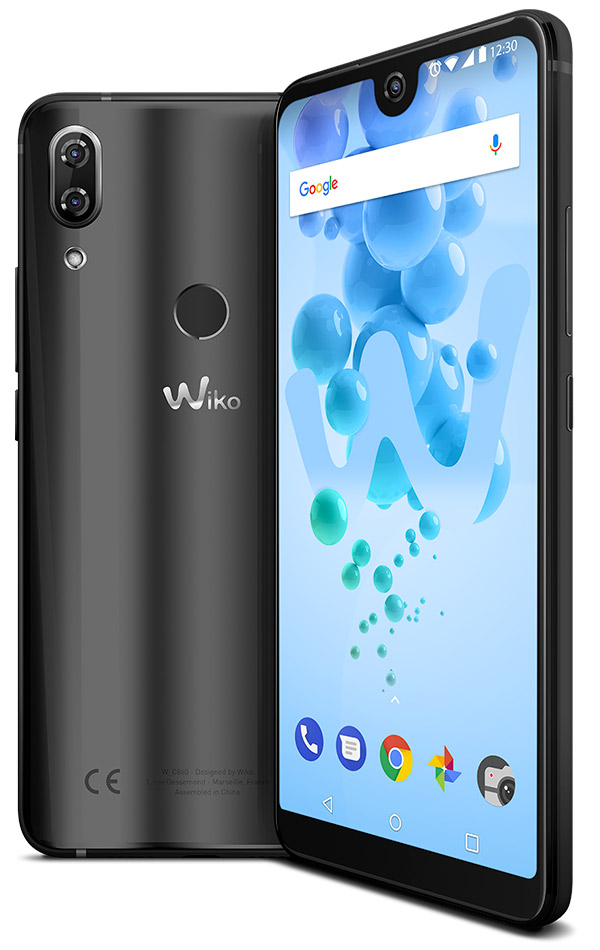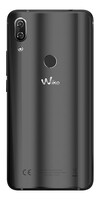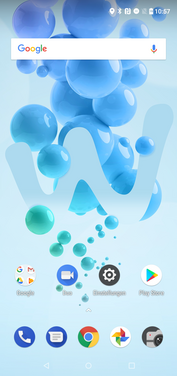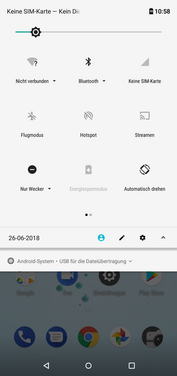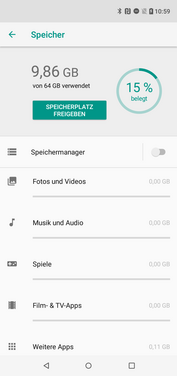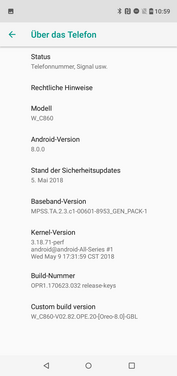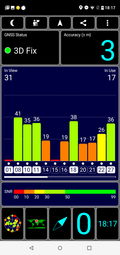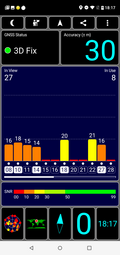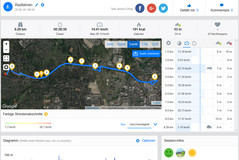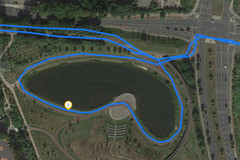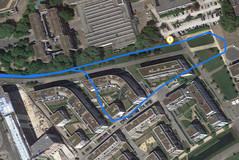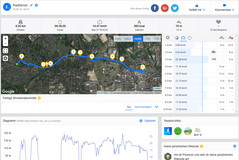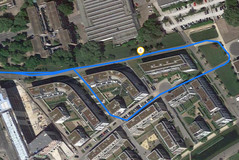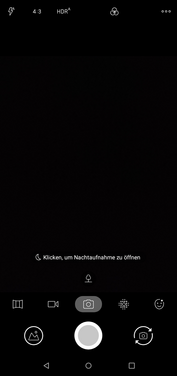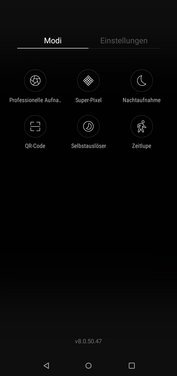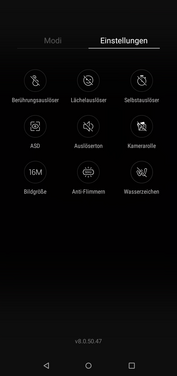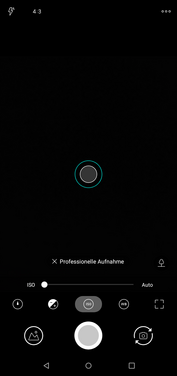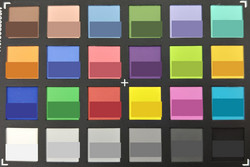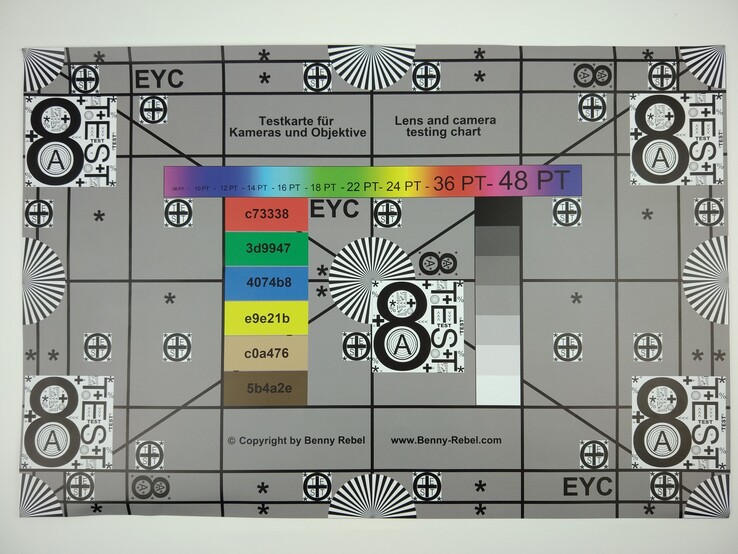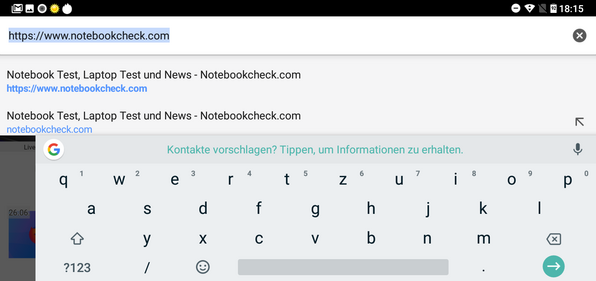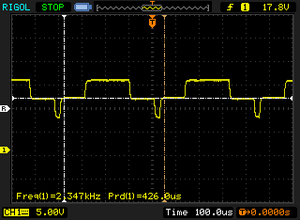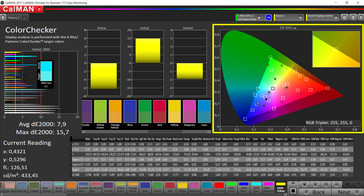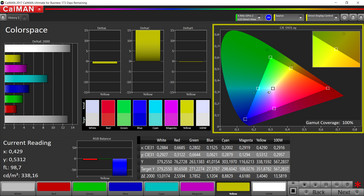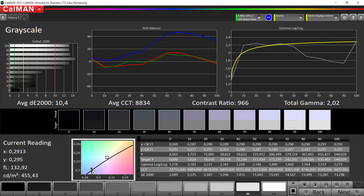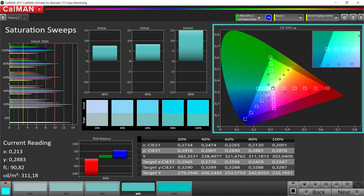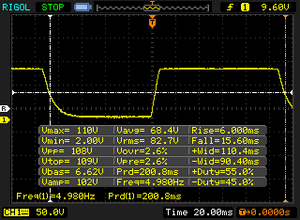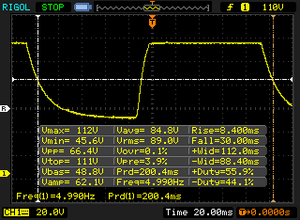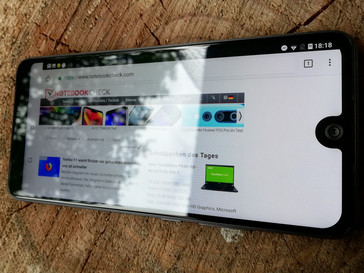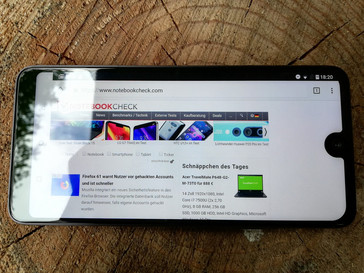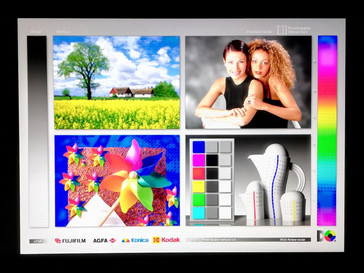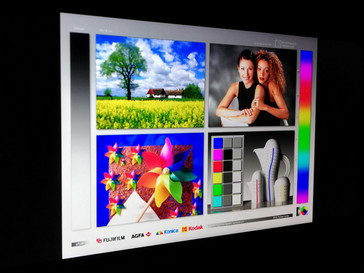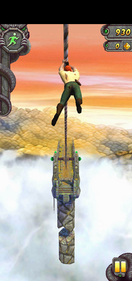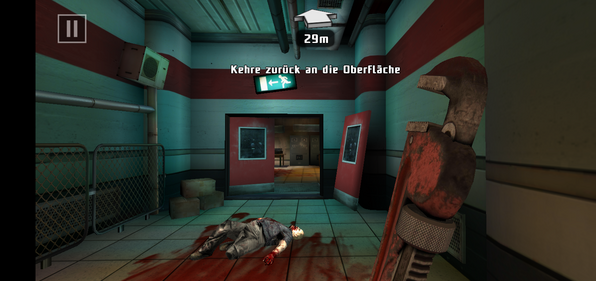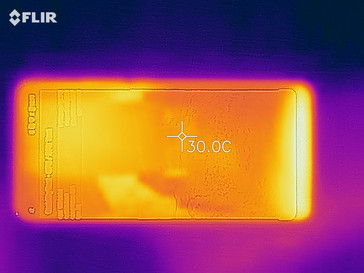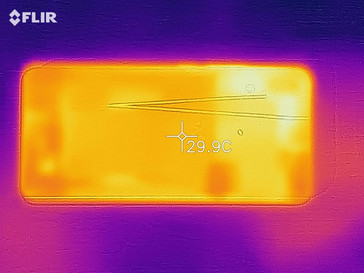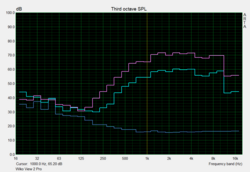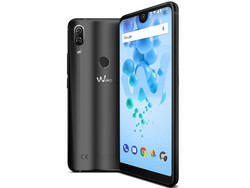Wiko View 2 Pro Smartphone Review
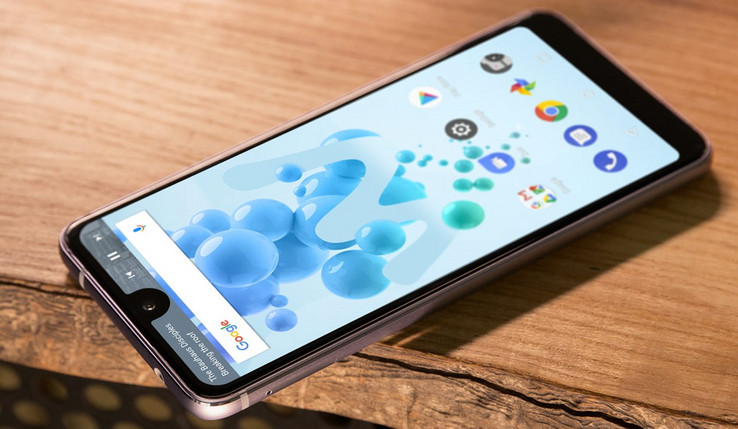
Over the years we have reviewed a number of Wiko devices. They have always made a good impression on us, though the camera quality has often been a weak point. Yet precisely this feature is allegedly outstanding this time around: The 16 MP dual camera setup reportedly takes very good photos. The system runs smoothly, thanks to a team composed of a Qualcomm Snapdragon 450 and Adreno 506 GPU. 4 GB of RAM and 64 GB of eMMC flash storage also join the ranks.
The recommended retail price of 300 Euros (~$350) sorts the View 2 Pro into a price bracket thronged with competitors. For the purposes of this review, we will focus on five comparable devices in the same price range with nearly identical hardware configurations: the Xiaomi Redmi Note 5, the Motorola Moto G6, the Blade V9 from ZTE, the Honor 7X and the Samsung Galaxy A6.
Case - Wiko smartphone with glass-like finish
The Wiko View 2 Pro's case is made of metal, though only the sides are palpably metallic. The back side is sealed with a "glass touch" material that feels much like plastic. All the components are carefully assembled; there are no uneven gaps or rough edges to speak of. On the front side, Wiko has tried to allocate the display as much space as possible. The notch houses only the selfie camera; the speaker occupies a very narrow bar above the display. Buyers can choose between the colors black and gold.
Connectivity - Dual SIM Android phone
The View 2 Pro runs on a Qualcomm Snapdragon 450 SoC, supported by an Adreno 506 graphics unit. With 4 GB of RAM and 64 GB of eMMC flash storage, the Wiko smartphone offers a solid mid-range base configuration. Via microSD card, the internal storage can be expanded by up to 256 GB—though the user then forfeits the possibility of installing a second SIM card.
The slot on the left side of the device can only house two SIM cards or one SIM card and one microSD card. The volume rocker and the power button sit on the right side, secure in their respective casing. The latter has a ribbed surface. A 3.5 mm jack on the top side of the device enables the user to connect the headset that comes with the smartphone. The bottom side houses a second speaker and the microUSB connection. The latter supports OTG and thus allows external USB devices to be connected.
Software - Pure Android from Wiko
Wiko chose Android Oreo Version 8.0 as the View 2 Pro's OS, with security updates dated from May 5, 2018. Users get pure Android without any modifications by the manufacturer. Only the functionality-related apps, for example support for the intelligent cover functions, come preinstalled on our test device.
As soon as an SD card is installed, the user is asked whether the additional storage should be employed as a mobile storage medium or as internal storage. To enable multiple users to make use of the Android smartphone, various accounts can be set up through the menu.
Communication and GPS - Smartphone for accurate location services
The Wiko smartphone can establish wireless connections via GSM, 3G and LTE (Cat. 6). The reception is always good, though in areas with bad network coverage, the View 2 Pro tends to lose connection quicker than other smartphones.
Users can rely on NFC, Bluetooth 4.0 and WLAN for communication over shorter distances. The latter only supports the standards b, g and n on the 2.4 GHz band. The dual SIM smartphone reaches comparatively poor transfer rates of under 50 Mb/s, and its WLAN range is also shorter than those of comparable devices. Compared to the competition, it takes last place in this discipline.
| Networking | |
| iperf3 transmit AX12 | |
| Xiaomi Redmi Note 5 | |
| Samsung Galaxy A6 2018 | |
| Motorola Moto G6 | |
| Wiko View 2 Pro | |
| Huawei Honor 7X | |
| iperf3 receive AX12 | |
| Xiaomi Redmi Note 5 | |
| Samsung Galaxy A6 2018 | |
| Motorola Moto G6 | |
| Huawei Honor 7X | |
| Wiko View 2 Pro | |
To determine its location, the View 2 Pro relies on GPS and A-GPS, as well as Glonass and Beidou. We use the GPS Test app to determine how accurately a smartphone can position us. Outdoors, the View 2 Pro could position us to within three meters (~10 feet) of our actual location. The satellite connection remained stable indoors too—though the accuracy fell to 30 meters (~100 feet).
The View 2 Pro's precision in this area was once again verified by our obligatory bike ride. We assessed the Wiko smartphone's results compared to those of our reference device, the Garmin Edge 500. At times, the Android phone recorded our route more accurately than the professional bike navigation device. Especially along the length of extended curves and on narrow paths, our test device registered the course with a substantially higher level of precision.
Phone Function and Speech Quality - Clear connection with the Android phone
Users of the Wiko View 2 Pro have the standard Android phone app at their command. Phone calls can be placed easily, and finding contacts in the phone book is simple. During conversations, participants are loud and easy to understand. Even in loud environments, the volume is sufficient to drown out background noise. The speakerphone function also produces a clear sound through the built-in speakers. At maximum volume, however, the speakers do buzz somewhat. The headset that comes with the smartphone is good for phone calls and offers a louder volume with good speech output.
Cameras - Android smartphone with dual cameras
In Wiko's advertising, the company focuses primarily on the View 2 Pro's cameras. On the back, users have access to a dual camera system with a 16 MP IMX 499 sensor and an f/1.7 aperture. The front camera also offers 16 MP, though it only has one sensor and an f/2.0 aperture. The front camera only takes acceptable photos in daylight, and even in these circumstances, the pictures look a little pale and could be somewhat sharper in background areas.
Despite its comparatively smaller aperture, the Wiko smartphone's main camera takes somewhat darker photos. On the other hand, the sensor reproduces background details well, and both light and dark areas of an image are clearly distinguished from each other. In close-ups, color transitions are a little washed out, and the background looks especially hazy. In poor lighting, the dual camera system's performance drops significantly. Areas in the direct vicinity of a light source are reproduced decently well, but the image quickly fades into total darkness. Users have more control over photographs in pro mode, where they can manually set lighting, white balance, ISO and color saturation. Manual focus is also available in this mode.
The camera function is accompanied by very few settings options. However, aside from resolution, users can also choose a broader angle. The image stabilizer performs its job well.
We evaluate a camera's image colors with ColorChecker Passport. In photos taken with the Wiko View 2 Pro's camera, all colors look substantially too light and only blacks are darker than they ought to be.
In a controlled lighting environment, the image once again looks too dark and faintly blurry around the edges. Details, however—such as fine lines and symbols—remain recognizable. The imaging performance is good primarily in the center of the photo, but colors are too pale, and the image is too dark overall.
Accessories and Warranty - MicroUSB and headset in the box
The Wiko View 2 Pro's box contents include a USB power supply with a matching microUSB cable and a stereo headset. The latter is good for conversations, but due to the relatively low volume, playing media content over long periods is not recommendable. Also enclosed in the box is a SIM ejector tool packaged in a rubber key ring.
On the manufacturer's website, customers can purchase universal smartphone accessories. Cases and protective films customized for the View 2 Pro are also available on that site, though they can only be obtained through an intermediary distributor.
Buyers of the Wiko View 2 Pro will receive a 24-month warranty for the smartphone. Please see our Guarantees, Return policies and Warranties FAQ for country-specific information.
Input Devices and Operation - Smartphone with face-recognition
For text input on the Wiko smartphone, Google's standard GBoard keyboard stands at the ready. This keyboard enables users to type texts quickly and easily. The touchscreen reacts promptly and features an especially smooth surface. It is easy to execute drag-and-drop gestures, and the position sensor reacts quickly and reliably.
To unlock the device, users can turn to the fingerprint reader or face-recognition. While the sensor only reacts if a registered finger touches the surface nearly exactly as it was saved, the face-recognition system functions reliably. Unlocking the device with face-recognition takes hardly any longer than entering a PIN or pattern.
Display - Bright display with low contrast
The Wiko View 2 Pro's display consists of a 6-inch IPS panel protected by Corning Gorilla Glass. It has a resolution of 1528x720 pixels. At an average brightness level of around 541 cd/m², the View 2 Pro offers the brightest screen among the competitors. On the other hand, other manufacturers have equipped their smartphones in this price bracket with displays that offer substantially higher resolutions in 2:1 format.
| |||||||||||||||||||||||||
Brightness Distribution: 92 %
Center on Battery: 562 cd/m²
Contrast: 1004:1 (Black: 0.56 cd/m²)
ΔE ColorChecker Calman: 7.9 | ∀{0.5-29.43 Ø4.77}
ΔE Greyscale Calman: 10.4 | ∀{0.09-98 Ø5}
100% sRGB (Calman 2D)
Gamma: 2.02
CCT: 8834 K
| Wiko View 2 Pro IPS, 1528x720, 6" | Xiaomi Redmi Note 5 IPS, 2160x1080, 6" | Motorola Moto G6 IPS, 2160x1080, 5.7" | ZTE Blade V9 IPS, 2160x1080, 5.7" | Huawei Honor 7X IPS, 2160x1080, 5.9" | Samsung Galaxy A6 2018 Super AMOLED, 1480x720, 5.6" | |
|---|---|---|---|---|---|---|
| Screen | 34% | 22% | 9% | 32% | 27% | |
| Brightness middle (cd/m²) | 562 | 518 -8% | 488 -13% | 459 -18% | 533.2 -5% | 453 -19% |
| Brightness (cd/m²) | 541 | 532 -2% | 478 -12% | 437 -19% | 511 -6% | 459 -15% |
| Brightness Distribution (%) | 92 | 94 2% | 95 3% | 90 -2% | 88 -4% | 93 1% |
| Black Level * (cd/m²) | 0.56 | 0.23 59% | 0.42 25% | 0.62 -11% | 0.35 37% | |
| Contrast (:1) | 1004 | 2252 124% | 1162 16% | 740 -26% | 1523 52% | |
| Colorchecker dE 2000 * | 7.9 | 5.66 28% | 3.9 51% | 4.5 43% | 2.83 64% | 2.6 67% |
| Colorchecker dE 2000 max. * | 15.7 | 10.32 34% | 6.8 57% | 7.3 54% | 6.72 57% | 9.2 41% |
| Greyscale dE 2000 * | 10.4 | 6.8 35% | 5.3 49% | 4.9 53% | 3.7 64% | 1.6 85% |
| Gamma | 2.02 109% | 2.269 97% | 2.41 91% | 2.17 101% | 1.9 116% | 2.07 106% |
| CCT | 8834 74% | 8564 76% | 7146 91% | 7261 90% | 6918 94% | 6356 102% |
* ... smaller is better
Screen Flickering / PWM (Pulse-Width Modulation)
| Screen flickering / PWM detected | 2347 Hz | ≤ 4 % brightness setting | |
The display backlight flickers at 2347 Hz (worst case, e.g., utilizing PWM) Flickering detected at a brightness setting of 4 % and below. There should be no flickering or PWM above this brightness setting. The frequency of 2347 Hz is quite high, so most users sensitive to PWM should not notice any flickering. In comparison: 53 % of all tested devices do not use PWM to dim the display. If PWM was detected, an average of 8083 (minimum: 5 - maximum: 343500) Hz was measured. | |||
Apart from its good brightness level, the Wiko smartphone's display performed mostly below average in our tests. At 0.56, the black value is significantly elevated compared to the Wiko device's competitors, and the contrast ratio of 1004:1 is weaker than the competition. In addition, the DeltaE values we measured exceed those of the devices we have selected for comparison. In everyday use, these results manifest themselves in the display content's somewhat pale colors and a gray haze that covers the entire image.
Display Response Times
| ↔ Response Time Black to White | ||
|---|---|---|
| 21.6 ms ... rise ↗ and fall ↘ combined | ↗ 6 ms rise | |
| ↘ 15.6 ms fall | ||
| The screen shows good response rates in our tests, but may be too slow for competitive gamers. In comparison, all tested devices range from 0.1 (minimum) to 240 (maximum) ms. » 47 % of all devices are better. This means that the measured response time is similar to the average of all tested devices (20.2 ms). | ||
| ↔ Response Time 50% Grey to 80% Grey | ||
| 38.4 ms ... rise ↗ and fall ↘ combined | ↗ 8.4 ms rise | |
| ↘ 30 ms fall | ||
| The screen shows slow response rates in our tests and will be unsatisfactory for gamers. In comparison, all tested devices range from 0.165 (minimum) to 636 (maximum) ms. » 56 % of all devices are better. This means that the measured response time is worse than the average of all tested devices (31.6 ms). | ||
On cloudy days, even outdoors the display content on the Wiko View 2 Pro is clearly visible. In direct sunlight, however, the luminosity is not sufficient to overcome the intense ambient light. The screen's reflective surface can further obscure the display content.
Performance - Lower mid-range Wiko phone
In the Wiko View 2 Pro, a Qualcomm Snapdragon 450 and an Adreno 506 GPU provide the necessary processing power for the system to run smoothly. Combined with 4 GB of RAM and 64 GB of flash storage, the components in this lower mid-range smartphone do in fact perform quite well.
The Android phone's benchmark results are a mixed bag. While the Wiko smartphone takes last place in some tests, it secures a top position in others. In everyday use, our test device functions unproblematically and opens apps without long lags.
| AnTuTu v6 - Total Score (sort by value) | |
| Wiko View 2 Pro | |
| Xiaomi Redmi Note 5 | |
| Motorola Moto G6 | |
| ZTE Blade V9 | |
| Huawei Honor 7X | |
| Samsung Galaxy A6 2018 | |
| Average Qualcomm Snapdragon 450 (54731 - 60077, n=10) | |
| AnTuTu v7 - Total Score (sort by value) | |
| Wiko View 2 Pro | |
| Xiaomi Redmi Note 5 | |
| Motorola Moto G6 | |
| ZTE Blade V9 | |
| Huawei Honor 7X | |
| Samsung Galaxy A6 2018 | |
| Average Qualcomm Snapdragon 450 (56497 - 73468, n=11) | |
| Lightmark - 1920x1080 1080p (sort by value) | |
| Motorola Moto G6 | |
| ZTE Blade V9 | |
| Huawei Honor 7X | |
| Average Qualcomm Snapdragon 450 (5.38 - 5.41, n=2) | |
| Basemark ES 3.1 / Metal - offscreen Overall Score (sort by value) | |
| Xiaomi Redmi Note 5 | |
| Motorola Moto G6 | |
| ZTE Blade V9 | |
| Average Qualcomm Snapdragon 450 (129 - 129, n=2) | |
| Average of class Smartphone (205 - 7731, n=34, last 2 years) | |
In the browser benchmarks, the Wiko phone's performance is standard for a lower mid-range device—in every test, the results position our test device in the middle or lower portion of our list. Surfing the Internet is still a smooth experience, though media content (e.g. YouTube videos) sometimes requires longer load times.
| JetStream 1.1 - Total Score | |
| Xiaomi Redmi Note 5 (Chrome 67) | |
| Huawei Honor 7X (Chrome 63.0.3239.111) | |
| Motorola Moto G6 (Chrome 66) | |
| Average Qualcomm Snapdragon 450 (22 - 22.7, n=13) | |
| Wiko View 2 Pro (Chrome 67) | |
| ZTE Blade V9 (Ume Browser 1.2.18) | |
| Samsung Galaxy A6 2018 (Chrome 64.0.3282.137) | |
| Octane V2 - Total Score | |
| Average of class Smartphone (2228 - 126661, n=195, last 2 years) | |
| Xiaomi Redmi Note 5 (Chrome 67) | |
| Huawei Honor 7X (Chrome 63.0.3239.111) | |
| Wiko View 2 Pro (Chrome 67) | |
| Average Qualcomm Snapdragon 450 (3470 - 4115, n=14) | |
| ZTE Blade V9 (Ume Browser 1.2.18) | |
| Motorola Moto G6 (Chrome 66) | |
| Samsung Galaxy A6 2018 (Chrome 64.0.3282.137) | |
| Mozilla Kraken 1.1 - Total | |
| ZTE Blade V9 (Ume Browser 1.2.18) | |
| Samsung Galaxy A6 2018 (Chrome 64.0.3282.137) | |
| Motorola Moto G6 (Chrome 66) | |
| Average Qualcomm Snapdragon 450 (11012 - 11863, n=14) | |
| Wiko View 2 Pro (Chrome 67) | |
| Huawei Honor 7X (Chrome 63.0.3239.111) | |
| Xiaomi Redmi Note 5 (Chrome 67) | |
| Average of class Smartphone (257 - 28190, n=155, last 2 years) | |
| WebXPRT 2015 - Overall | |
| Xiaomi Redmi Note 5 (Chrome 67) | |
| Huawei Honor 7X (Chrome 63.0.3239.111) | |
| Average Qualcomm Snapdragon 450 (90 - 103, n=7) | |
| ZTE Blade V9 (Ume Browser 1.2.18) | |
| Motorola Moto G6 (Chrome 66) | |
| Samsung Galaxy A6 2018 (Chrome 64.0.3282.137) | |
* ... smaller is better
Of the 64 GB of internal storage, around 54 GB remains available to the user. The write and read speeds are appropriate for a device in this price bracket. If we average the results from all of the smartphones we have reviewed, the Wiko View 2 Pro surpasses those speeds by around 15%. With our Toshiba Exceria Pro M501 reference memory card, the microSD card reader also reached speeds that are more or less on par with the devices we have selected for comparison.
| Wiko View 2 Pro | Xiaomi Redmi Note 5 | Motorola Moto G6 | ZTE Blade V9 | Huawei Honor 7X | Samsung Galaxy A6 2018 | Average 64 GB eMMC Flash | Average of class Smartphone | |
|---|---|---|---|---|---|---|---|---|
| AndroBench 3-5 | 16% | 124% | 0% | 18% | -10% | 65% | 1756% | |
| Sequential Read 256KB (MB/s) | 265.4 | 287.6 8% | 238.2 -10% | 265.4 0% | 265.3 0% | 208.4 -21% | 277 ? 4% | 2248 ? 747% |
| Sequential Write 256KB (MB/s) | 194.3 | 121.6 -37% | 117.2 -40% | 119.4 -39% | 127.9 -34% | 100.6 -48% | 178.4 ? -8% | 1887 ? 871% |
| Random Read 4KB (MB/s) | 65.6 | 48.9 -25% | 69.9 7% | 29.81 -55% | 81.4 24% | 24.54 -63% | 60.7 ? -7% | 299 ? 356% |
| Random Write 4KB (MB/s) | 6.72 | 16.3 143% | 59.9 791% | 12.47 86% | 20.24 201% | 10.68 59% | 33.8 ? 403% | 346 ? 5049% |
| Sequential Read 256KB SDCard (MB/s) | 82.3 ? | 83.4 1% | 75.3 ? -9% | 83.9 ? 2% | 52.7 -36% | 81.4 ? -1% | 77.4 ? -6% | |
| Sequential Write 256KB SDCard (MB/s) | 57.8 ? | 62.4 8% | 61.5 ? 6% | 62.1 ? 7% | 30.55 -47% | 65.7 ? 14% | 58.3 ? 1% |
Games - No "Back" with the Wiko smartphone
In our test device, a Qualcomm Adreno 506 graphics unit provides the necessary performance to render graphics-heavy apps and games. The games we tested - Temple Run 2 and Dead Trigger 2 - ran flawlessly and started without long load times. The controls on the touchscreen did not present us with any problems, and apps that make use of the position sensor worked cleanly as well. However, a bug in the software left us incapable of accessing the navigation buttons from within the games. The only way out was to hold down the power key until the Android controls appeared.
Emissions - Lukewarm and medium-loud
In everyday use, the Wiko View 2 Pro hardly seems to warm up at all—and our measurements verified this subjective impression. Under load, the surface temperatures reached a maximum of 32 °C (89.6 °F) and felt only about as warm as our hand. As a result, problems that arise when devices heat to high temperatures are not a concern for the Wiko View 2 Pro.
(+) The maximum temperature on the upper side is 31.6 °C / 89 F, compared to the average of 35.2 °C / 95 F, ranging from 21.9 to 247 °C for the class Smartphone.
(+) The bottom heats up to a maximum of 30.2 °C / 86 F, compared to the average of 34 °C / 93 F
(+) In idle usage, the average temperature for the upper side is 29.9 °C / 86 F, compared to the device average of 32.9 °C / 91 F.
Speakers
The Wiko smartphone's speakers only reach a moderate volume—though on the plus side, mid-range tones in particular are very balanced. Very high notes and bass notes are underrepresented, and the high and low tones that do appear buzz a little at maximum volume. The headset that comes with the smartphone can help somewhat here, though only high tones are present—which, fortunately, is sufficient for conversations. The headphones do not produce a good enough sound for listening to music, but other headsets or external speakers can be connected via the 3.5 mm jack.
Wiko View 2 Pro audio analysis
(±) | speaker loudness is average but good (81.5 dB)
Bass 100 - 315 Hz
(-) | nearly no bass - on average 26.9% lower than median
(±) | linearity of bass is average (7.5% delta to prev. frequency)
Mids 400 - 2000 Hz
(+) | balanced mids - only 4.4% away from median
(+) | mids are linear (6.4% delta to prev. frequency)
Highs 2 - 16 kHz
(+) | balanced highs - only 4.8% away from median
(+) | highs are linear (2.5% delta to prev. frequency)
Overall 100 - 16.000 Hz
(±) | linearity of overall sound is average (23.1% difference to median)
Compared to same class
» 52% of all tested devices in this class were better, 7% similar, 42% worse
» The best had a delta of 11%, average was 35%, worst was 134%
Compared to all devices tested
» 68% of all tested devices were better, 5% similar, 26% worse
» The best had a delta of 4%, average was 24%, worst was 134%
Motorola Moto G6 audio analysis
(+) | speakers can play relatively loud (87.4 dB)
Bass 100 - 315 Hz
(-) | nearly no bass - on average 22.5% lower than median
(±) | linearity of bass is average (12.4% delta to prev. frequency)
Mids 400 - 2000 Hz
(+) | balanced mids - only 2.9% away from median
(+) | mids are linear (4.2% delta to prev. frequency)
Highs 2 - 16 kHz
(±) | higher highs - on average 7.1% higher than median
(+) | highs are linear (2.9% delta to prev. frequency)
Overall 100 - 16.000 Hz
(±) | linearity of overall sound is average (18.7% difference to median)
Compared to same class
» 21% of all tested devices in this class were better, 9% similar, 69% worse
» The best had a delta of 11%, average was 35%, worst was 134%
Compared to all devices tested
» 42% of all tested devices were better, 8% similar, 50% worse
» The best had a delta of 4%, average was 24%, worst was 134%
Battery Life - Phone with long battery life
The Wiko View 2 Pro is more efficient with its energy usage than other devices in its price bracket, though it cannot keep up with the low levels of power draw achieved by other Snapdragon 450 smartphones. At a maximum power draw of 5 watts, the 10-watt power supply that comes with the device should have no problem charging the Wiko phone, no matter the circumstances.
| Off / Standby | |
| Idle | |
| Load |
|
Key:
min: | |
| Wiko View 2 Pro 3000 mAh | Xiaomi Redmi Note 5 4000 mAh | Motorola Moto G6 3000 mAh | ZTE Blade V9 3200 mAh | Huawei Honor 7X 3340 mAh | Samsung Galaxy A6 2018 3000 mAh | Average Qualcomm Snapdragon 450 | Average of class Smartphone | |
|---|---|---|---|---|---|---|---|---|
| Power Consumption | -58% | 8% | 4% | -37% | 7% | -24% | -58% | |
| Idle Minimum * (Watt) | 0.64 | 1 -56% | 0.6 6% | 0.71 -11% | 1.02 -59% | 0.81 -27% | 0.794 ? -24% | 0.847 ? -32% |
| Idle Average * (Watt) | 2.07 | 2.6 -26% | 1.81 13% | 1.73 16% | 2.46 -19% | 1.26 39% | 2.27 ? -10% | 1.446 ? 30% |
| Idle Maximum * (Watt) | 2.13 | 2.9 -36% | 1.86 13% | 1.78 16% | 2.51 -18% | 1.3 39% | 2.48 ? -16% | 1.63 ? 23% |
| Load Average * (Watt) | 2.69 | 5 -86% | 2.78 -3% | 2.74 -2% | 4.16 -55% | 2.87 -7% | 3.95 ? -47% | 6.95 ? -158% |
| Load Maximum * (Watt) | 4.46 | 8.2 -84% | 4.04 9% | 4.36 2% | 5.87 -32% | 4.82 -8% | 5.38 ? -21% | 11.3 ? -153% |
* ... smaller is better
Battery Life
In our WLAN test, which is designed to simulate everyday use, the Wiko View 2 Pro ran for over 14 hours—leaving most of the competition behind. The power supply that comes with the smartphone fully charges the 3000 mAh battery in around two hours.
| Wiko View 2 Pro 3000 mAh | Xiaomi Redmi Note 5 4000 mAh | Motorola Moto G6 3000 mAh | ZTE Blade V9 3200 mAh | Huawei Honor 7X 3340 mAh | Samsung Galaxy A6 2018 3000 mAh | |
|---|---|---|---|---|---|---|
| Battery runtime | ||||||
| WiFi v1.3 (h) | 14.3 | 14.5 1% | 9.2 -36% | 13.2 -8% | 11.1 -22% | 10.1 -29% |
Pros
Cons
Verdict - Solid smartphone with good battery life
In our tests, the Wiko View 2 Pro proves to be a solid lower mid-range smartphone. The much-advertised camera does not offer the promised imaging performance, but it does produce somewhat better photos than many of its competitors. The system performance is appropriate for a smartphone with this hardware configuration.
The Wiko View 2 Pro is a solid mid-range smartphone that can hold its own among the competitors in its price bracket.
Primary concerns for interested customers may include the lack of a USB Type-C connection and the slow WLAN. On the other hand, the smartphone offers a very accurate GPS sensor and long battery life. In the end, personal taste plays a significant role in this price bracket, especially given that the Wiko View 2 Pro's notch design is executed somewhat clumsily.
Wiko View 2 Pro
- 06/29/2018 v6 (old)
Mike Wobker


